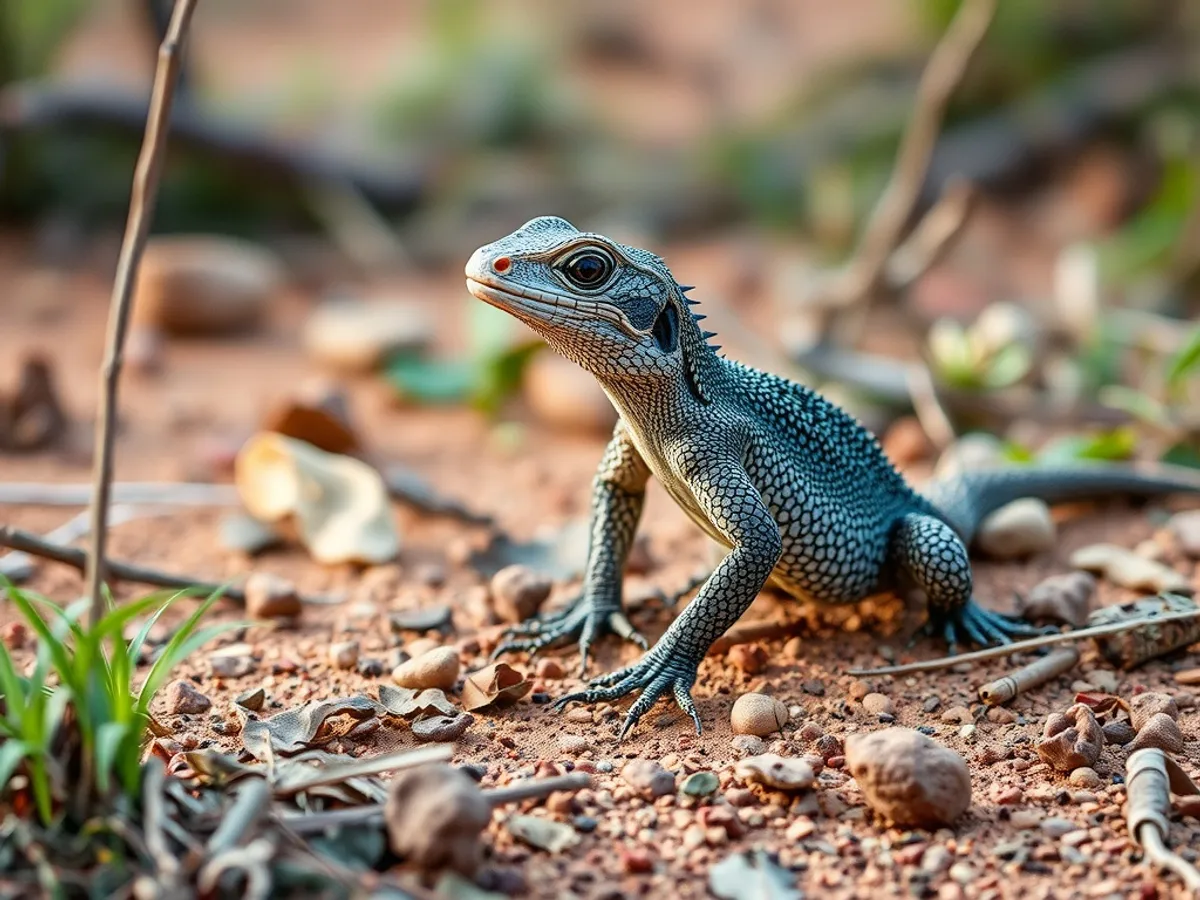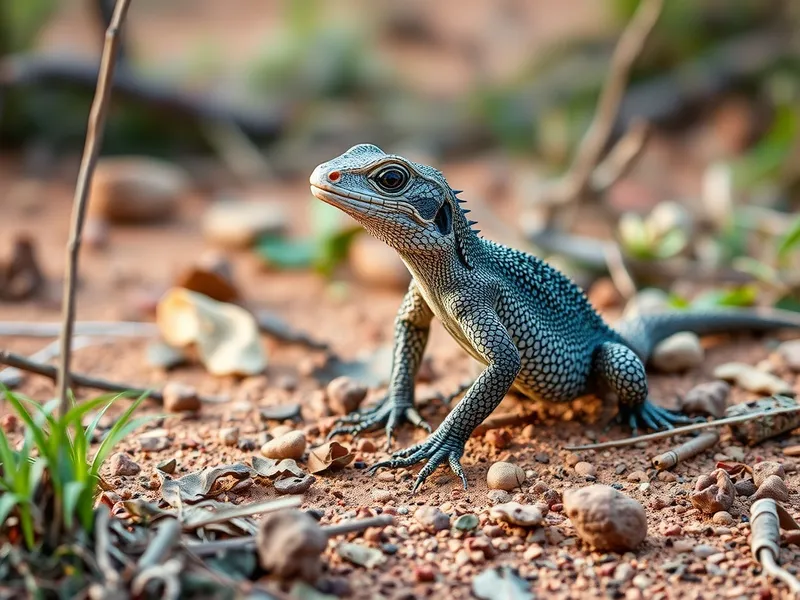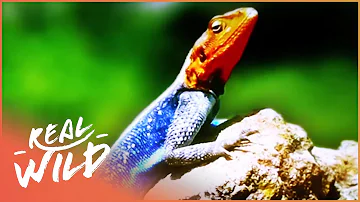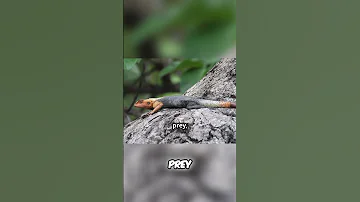
Common agama
Agama agama

Meet the Common agama
The common agama is a colorful, medium-sized lizard native to sub-Saharan Africa. Males are noted for their striking bright blue bodies and vivid orange or red heads, especially during the breeding season, while females and juveniles tend to have more subdued, earthy tones. Common agamas are highly adaptable, often found basking on rocks, walls, and rooftops in both wild and urban environments. They are diurnal and social, living in groups dominated by a single male, and communicate through head-bobbing and push-up displays.
Classification
Reptile
Habitat
Savanna
Diet
Insectivore
Lifespan
5-10 years
Conservation
Least Concern
Weight
80-150 grams
📖Fascinating Facts
Colorful Displays
Dominant males display brilliant blue and orange colors, especially during the mating season, to attract females and deter rivals.
Sun Lovers
Common agamas are diurnal and spend much of their day basking in the sun to regulate their body temperature.
Urban Survivors
These lizards readily adapt to urban environments, often found on buildings and in gardens throughout African cities.
📋Detailed Description
The common agama (Agama agama) is a robust, medium-sized lizard, with adult males typically reaching 30–40 cm in total length, while females are slightly smaller. Males are renowned for their vivid breeding coloration: a bright blue body with a striking orange to red head, which fades to more cryptic browns and grays outside the breeding season. Females and juveniles are generally drab brown or olive, with subtle patterning that provides camouflage. The species has a triangular head, well-developed limbs, and a long, tapering tail that aids in balance and rapid movement. Agamas possess acrodont dentition, with teeth fused to the jawbone, suited for their insectivorous diet. Their skin is covered in granular scales, and they have a distinctive gular pouch beneath the throat, used in social displays. Agama agama is diurnal and highly heliothermic, relying on basking to regulate body temperature. Social groups are structured around a dominant territorial male, several females, and subordinate males, with complex visual communication including head-bobbing, push-ups, and color changes. These lizards are highly adaptable, thriving in a range of habitats from rocky savannas to urban environments, often seen basking on walls, rooftops, and tree trunks.
💡 Did you know?
Despite their bright colors, common agamas can blend surprisingly well into their surroundings when threatened, often flattening themselves against surfaces to avoid predators.
🔬Research & Sources
Wikipedia Summary
The common agama, red-headed rock agama or rainbow agama is a species of lizard from the family Agamidae found in most of sub-Saharan Africa. To clear up centuries of historical confusion based on Linnaeus and other authors, Wagner et al. designated a neotype for the species, using a previously described specimen from Cameroon in the collection of the Zoologisches Forschungsmuseum Alexander Koenig in Bonn. The species name was formerly applied to a paraphyletic collection of taxa ; subsequent mitochondrial DNA analysis of various populations indicates they represent separate species. Consequently, three former subspecies A. a. africana, A. a. boensis, and A. a. mucosoensis are now considered separate species, and A. a. savattieri is considered synonymous with A. africana.
Last Modified: 4/1/2025
🎭Behavior & Social Structure
Common agamas are primarily diurnal, emerging at sunrise to bask and establish optimal body temperature before foraging. Their diet consists mainly of ants, beetles, grasshoppers, termites, and other arthropods, though they may opportunistically consume plant matter or smaller vertebrates. Hunting is active and visually guided, with prey detected by movement and captured with a rapid lunge. Socially, agamas are hierarchical: a dominant male defends a territory that encompasses several females and subordinates, using conspicuous displays—such as head-bobbing, push-ups, and tail lashing—to deter rivals and attract mates. Agamas are vigilant, quickly fleeing to cover or up vertical surfaces when threatened. At night, they seek shelter in crevices, under rocks, or in man-made structures. Group cohesion is maintained through visual signals, and aggressive encounters are resolved through ritualized displays more often than physical combat.
👶Reproduction & Life Cycle
Breeding in Agama agama is typically seasonal, coinciding with the onset of the rainy season, which varies geographically. Males intensify their coloration and increase display frequency to attract females and deter rivals. Courtship involves elaborate head-bobbing and circling displays. After mating, females lay 5–12 eggs in a shallow nest dug in sandy or loose soil, usually in a sunny, well-drained location. Incubation lasts 8–10 weeks, depending on temperature and humidity. There is no parental care post-oviposition; hatchlings are independent from birth and exhibit cryptic coloration to avoid predation. Females may lay multiple clutches per season if conditions are favorable.
🛡️Adaptations & Survival
Agama agama exhibits several adaptations for survival in open, sun-exposed habitats. Their coloration provides both camouflage and, in males, a means of social signaling. The ability to rapidly change color intensity allows quick responses to social and environmental cues. Their strong limbs and claws enable efficient climbing on rocks, trees, and urban structures. The long tail aids in balance and rapid directional changes during escape. Behavioral thermoregulation—basking and seeking shade—allows them to maintain optimal body temperature for activity. Their acrodont teeth are specialized for gripping and crushing hard-bodied insects. Social structure reduces intraspecific conflict and maximizes reproductive success for dominant males.
📚Research Sources
🎨Cultural Significance
The common agama is a familiar sight in many African towns and villages, often regarded with curiosity or indifference. In some cultures, its appearance is associated with rain or good fortune, while in others, it is considered a harmless household companion. Agamas are sometimes featured in local folklore and children's stories, symbolizing agility, vigilance, or adaptability. There are no widespread traditional uses, but in some areas, they may be used in folk medicine or as minor sources of food. Their striking appearance has made them popular in the pet trade and as subjects for ecological and behavioral research.
🔬Recent Research & Discoveries
Recent taxonomic revisions, informed by mitochondrial DNA analysis, have clarified that Agama agama was historically a paraphyletic grouping; several former subspecies (e.g., A. a. africana, A. a. boensis, A. a. mucosoensis) are now recognized as distinct species. A neotype was designated from Cameroon to stabilize the species' identity. Ongoing research focuses on color polymorphism, social signaling, and urban adaptation, with studies revealing that urban populations may exhibit altered behavior and morphology compared to rural conspecifics. Investigations into their thermal ecology have highlighted their flexibility in coping with urban heat islands. Agama agama is also a model for studying sexual selection and dominance hierarchies in reptiles.
🎥Wildlife Videos

The Strange World Of Lizards (Wildlife Documentary) | Wild About | Real Wild
Lizards are some of the world's most fascinating creatures. Join us as we learn all about these strange creatures and learn how ...
Real Wild

Wildlife - Just Reptiles | Free Documentary Nature
Wildlife - Episode 3: Just Reptiles | Wildlife Documentary Watch 'Wildlife - Episode 4' here: https://youtu.be/SNRyvGzDsww ...
Free Documentary - Nature

Amazing Facts About the Agama Lizard!#dragonadventure #wildlife #lizards #facts #amazingfactsfacts
Amazing Facts About the Agama Lizard Discover the fascinating world of the Agama Lizard in our latest video, "Amazing Facts ...
Animation tv

The Red-Headed Agama Lizard | The Riot And The Dance | Angel Studios | CLIP
Meet the red-headed Agama, a master of disguise and a fierce predator! With expert camouflage and sharp survival skills, ...
Angel Clips

Common Agama, Agama agama, Ankasa, Ghana, 25 Jan 2019 (2/2)
A beautiful lizard - and very succesful in hunting insects on this small tree.
Remco Hofland

The Agama Lizard: A Vital Ecological Guardian #education #nature #facts #world #animals
Thank you for watching. If you like the video, we have more on our channel. Check us out! Subscribe to stay updated for new ...
Creatures Of The World
🌍Habitat Information
The Common agama typically inhabits Savanna environments. Common agamas have adapted to their environments with specialized features and behaviors.
Primary Habitat:
Savanna
More detailed habitat information will be available soon.
🛡️Conservation Status
The Common agama is currently classified as Least Concern. Conservation efforts are crucial for preserving this species for future generations.
Common Threats:
- 🏠Habitat loss and fragmentation
- 🌡️Climate change impacts
- 🎯Hunting and poaching
- 🏭Human-wildlife conflict
⚠️Threats & Conservation Challenges
Currently assessed as Least Concern by the IUCN, Agama agama is widespread and abundant across sub-Saharan Africa, with stable populations in both natural and urbanized areas. However, local threats include habitat destruction due to urban expansion, agriculture, and deforestation. In some regions, agamas are collected for the pet trade, though this is not considered a major threat. They are occasionally persecuted due to misconceptions or as pests. Climate change and increased urbanization may alter habitat availability and microclimate conditions, potentially impacting local populations. Overall, the species demonstrates high ecological plasticity, contributing to its resilience.
🔬Scientific Classification
Scientific Name
Agama agama
Classification Hierarchy
🔍 About Taxonomic Classification
Taxonomic classification is a hierarchical system used by scientists to classify and organize living organisms based on shared characteristics and evolutionary relationships.
The system moves from broad categories (Kingdom) to increasingly specific ones, with each animal's scientific name typically consisting of its Genus and species.
📝Community Notes
Share your observations and insights about the Common agama with our community of wildlife enthusiasts.
Join Our Community
Sign in to share your observations and connect with fellow wildlife enthusiasts.
Sign In to ContributeNo community notes yet
Be the first to share your observations about the Common agama!
Explore Common agama
Select a tab above to learn more about this amazing animal.
📸Photo Gallery
No photos available for this animal yet.
🌟Discover More Wildlife
Continue your journey of discovery with more fascinating animals from our database
